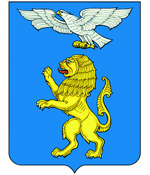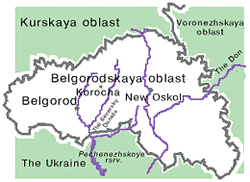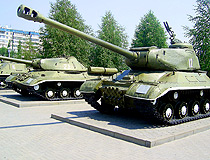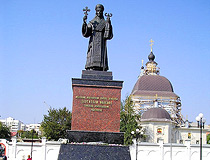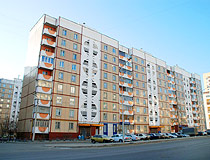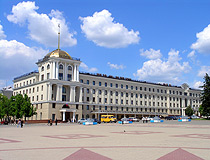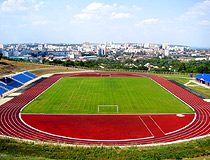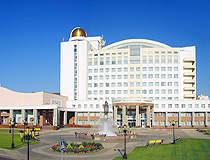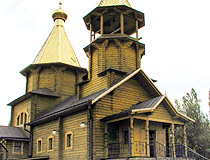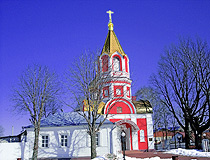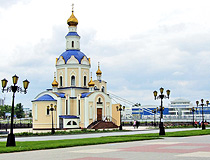History of Belgorod
Foundation of Belgorod
There are different versions about the year of foundation of Belgorod. According to some sources, the first settlements existed in this territory during the time of Kievan Rus at the end of the 10th century. As a result of the Mongol invasion, these settlements were destroyed. The most common version is that for the first time Belgorod was laid down by order of Tsar Fyodor I Ivanovich as a border fortress in 1596.
Disputes about the foundation of Belgorod in the 10th century have been going on since the middle of the 19th century. A scientific study of the history of Belgorod of the 10th-15th centuries has not yet been carried out.
At the end of 1593, the Russian Tsar Fyodor I Ivanovich ordered to build new fortified settlements on all Tatar routes from the Seversky Donets to the Oka and to populate them with soldiers and Cossacks to protect Russia from endless raids of the Crimean Tatars. Belgorod fortress was built on the right bank of the Seversky Donets River in the fall of 1596.
This fortress was burned by Polish-Lithuanian troops during the Time of Troubles in Russia in the summer of 1612. The new Belgorod fortress was built on the left side of the Seversky Donets in the autumn of 1612. In 1626, the population of Belgorod was about 5,000. In 1650, the final location of the fortress was determined on the right bank of the river - the central part of present Belgorod.
More historical facts…
Since 1658, Belgorod was the main town of the Belgorod line - the 800-km defensive line that protected the Tsardom of Russia from the raids of the Crimean Tatars. The construction of the Belgorod line deprived the Tatars of the opportunity to raid inland Russia, and also contributed to the development of the region and its economy. In the same year, the Belgorod regiment was formed - a large permanent military unit, which included all the armed forces on the Belgorod line and was subordinate to the Belgorod governor.
Belgorod in the Russian Empire
At the beginning of the 18th century, after Novorossiya (New Russia), a region north of the Black Sea, was joined to Russia and the construction of the Ukrainian defensive line, the strategic importance of Belgorod significantly decreased. Soon after the conquest of Crimea, in 1785, since the threat of raids by the Crimean Tatars disappeared and the town was far from the borders of the Russian Empire, it was excluded from the list of fortresses.
In 1708, when Russia was divided into eight governorates, Belgorod became the center of the Belgorod province of the Kiev governorate. In the first half of the 18th century, Belgorod became a major industrial and cultural center. In 1856, the population of Belgorod was about 12,800 people.
In 1869, the Kursk-Kharkov-Azov railway passed through Belgorod. In 1871, the first water supply system began to operate. Near Belgorod, high-quality chalk was mined. There was a trade in farm animals, grain, lard, leather, wax, and manufactory. Beekeeping, melon farming and gardening were developed. Belgorod was famous for its numerous orchards.
With the construction of railways, the city’s connections with industrial centers and neighboring regions expanded. By the beginning of the 20th century, Belgorod became a major railway junction. In 1913, the population of Belgorod was about 28,400 people.
In 1917-1922, during the Civil War on the territory of the former Russian Empire, power in Belgorod changed several times. At one time it was even the temporary capital of Ukraine. Since December 1922, it was a city within the Russian Soviet Federative Socialist Republic of the Union of Soviet Socialist Republics.
Belgorod in Soviet times and beyond
After the Civil War, the industry of the city began to revive. By 1926, it reached the pre-war level, which required the construction of a power plant in the floodplain of the Seversky Donets. On June 13, 1934, Belgorod was included in the newly formed Kursk Oblast. In 1939, the population was about 34,300 people.
During the Second World War, Belgorod was twice occupied by German troops: October 24, 1941 and March 18, 1943. The first liberation was carried out during the Kharkov offensive on February 9, 1943, the second liberation of Belgorod happened during the Battle of Kursk on August 5, 1943. During the second liberation, the city was almost completely destroyed.
On August 5, 1943, in honor of the liberation of Belgorod and Oryol from German troops, salute was given in Moscow - the first salute during the war in the USSR. Since then, Belgorod is known as the city of the first salute, and August 5th is celebrated as the City Day. During the war years, almost all of the historical buildings were destroyed, not a single building was left undamaged. After the second liberation, the population of Belgorod was only 150 people.
In 1954, this completely rebuilt city became the administrative center of the newly formed Belgorod Oblast. From this time, the rapid development of Belgorod as a regional center began. In the second half of the 1950s, chalk mining destroyed the remains of the first Belgorod fortress, which still stood on the high coastal cape of the right bank of the Seversky Donets. In 1959, the population of Belgorod was about 72,200 people.
With the transformation of Belgorod into a large industrial center, new residential districts began to form: from the end of the 1950s in the north and from the end of the 1960s in the south and on Kharkov mountain. In 1989, the population of Belgorod reached 300,000 people.
In 1995, the Central Bank of the Russian Federation issued the silver coin “Monuments of Russian Architecture: The 1000th Anniversary of the Foundation of Belgorod.” On August 13, 2013, a new telecommunications tower with a height of about 221 meters was commissioned in the city.
Streets of Belgorod
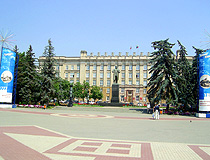
Sobornaya Square - the main square of Belgorod
Author: Paulo Melgaco
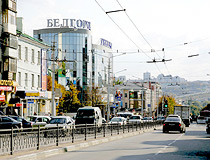
Street traffic in Belgorod
Author: Lyubomir Shevchuk
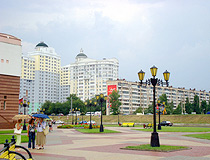
Old and new apartment buildings in Belgorod
Author: Shilkov Sergey
Belgorod - Features
Belgorod is located on the southern edge of the Central Russian Upland, halfway from Moscow to the Crimea. Today, it is a city with a developed infrastructure, a scientific, cultural, economic, and spiritual center of the Central Black Earth region of Russia. Belgorod has repeatedly occupied the first place in terms of cleanliness and amenities among Russian cities with a population of 100 to 500 thousand people.
The name “Belgorod” comes from a combination of words meaning in Russian “white” and “town”. There are several versions of the appearance of this name. On the territory of Belgorod there were significant reserves of chalk The first version is that “white town” means a fortress with walls built of white stone. According to another version, the name is related to the name of Belaya (White) Mountain, on the slopes of which Belgorod was originally built. So it meant a “town on a white mountain”.
The climate of Belgorod is temperate continental. Summers are hot and dry. Winters are moderately frosty with often thaws accompanied by rains (especially in December). Temperature drops below minus 20 degrees Celsius are also possible, which can last up to a week or more. The average temperature in January is minus 6.1 degrees Celsius, in July - plus 21.8 degrees Celsius.
The city industry is represented by enterprises of the chemical, pharmaceutical, woodworking, light, food industries, mechanical engineering and the production of building materials.
The most important railways and highways connecting Moscow with the southern regions of Russia and Ukraine pass through Belgorod, including the M2 “Crimea” federal highway and the Moscow-Kharkov-Sevastopol railway. Belgorod International Airport daily receives direct flights from Moscow.
Main Attractions of Belgorod
Although most of the historical monuments of Belgorod were destroyed during the Second World War, the city has something to see and visit.
Belgorod Zoo. The territory of the complex with a large artificial lake occupies 25 hectares. Walking routes run through several geographical areas - according to the natural habitats of animals: the Far East of Russia, the Russian North, Europe, Asia, America, and Australia. Animals inhabiting the Belgorod region can be found in a separate zone. Volchanskaya Street, 292v.
Belgorod Dinosaur Park - a pine forest with a lake and a quagmire inhabited by dozens of static and robotic life-size dinosaur models, a 3D movie theater, a dinosaur museum with copies of fossils from around the world, a children’s paleontological playground. Volchanskaya Street, 292v.
Museum-diorama “Kursk salient. Belgorod direction” - the most visited museum of Belgorod. It is dedicated to the Battle of Prokhorovka. The diorama “Prokhorovka Tank Battle” is the largest diorama in Russia (67x15 meters). In the open air, behind the main building, there is an exhibition of military equipment of the Second World War period. Popova Street, 2.
Museum of Medieval Warfare - one of the best museums in Belgorod. Here you can feel the atmosphere of the High Middle Ages. The exhibition presents household items, clothes, armor, weapons, which you can touch and even try on yourself. Knyazya Trubetskogo Street, 52.
Victory Park - a picturesque park located in the center of Belgorod. The best park of the city with a lot of monuments, children’s and sports grounds, restored embankment, nearby museums and cafes. There is an alley with busts of heroes of the USSR and Russia. Pobedy Street, 81.
Transfiguration Cathedral (1807-1813) - a beautiful monument of architecture located in the very center of Belgorod, one of the oldest preserved churches in Belgorod Oblast and the main church of Belgorod. Preobrazhenskaya Street, 63V.
Belgorod State Art Museum. The museum has about 3,700 exhibits of painting, graphic art, sculpture, decorative art, icon painting, one of the largest collections of works in the style of socialist realism. Pobedy Street, 77.
Belgorod State Museum of History and Local Lore - an interesting and informative museum. Several halls are dedicated to the nature of Belgorod Oblast. There are a lot of historical exhibits, as well as exhibits devoted to the famous people of the region. Popova Street, 2A.



